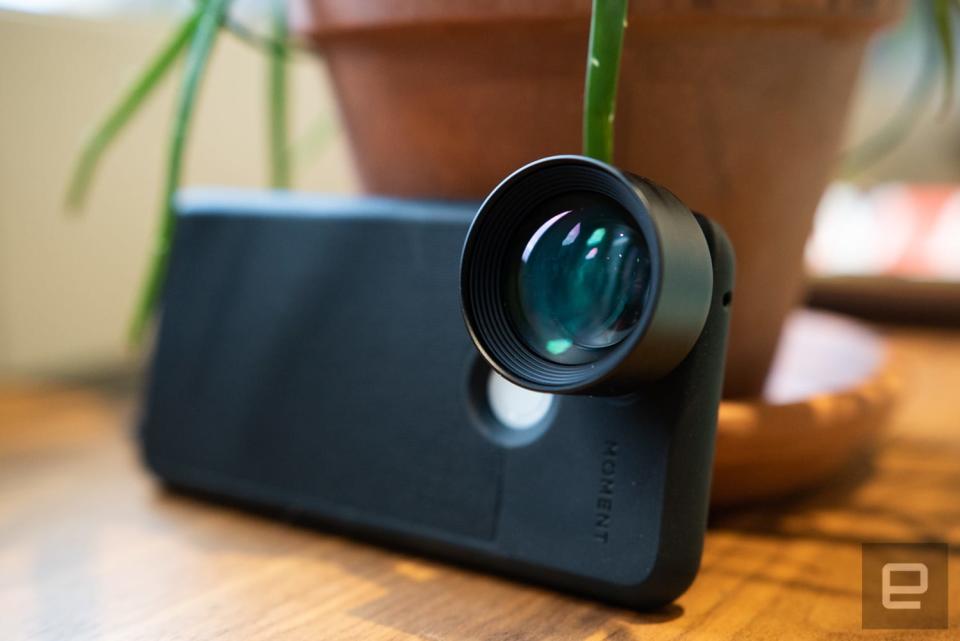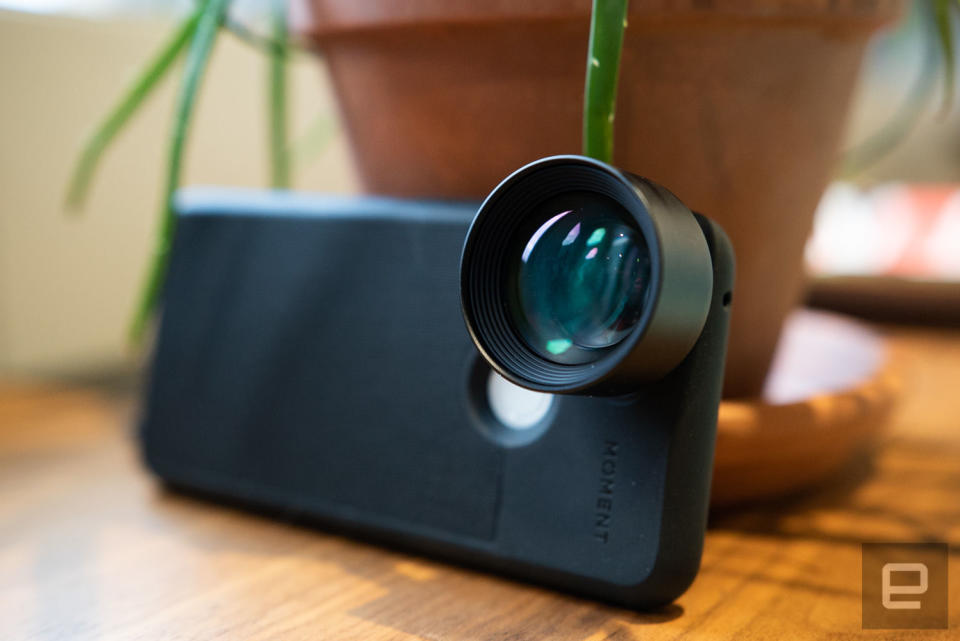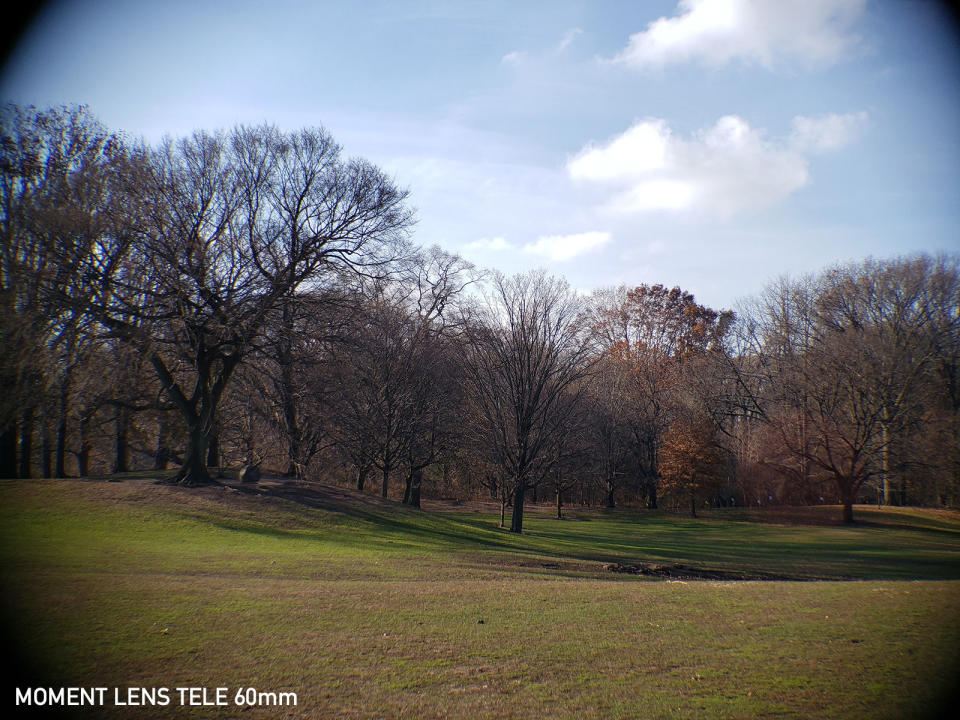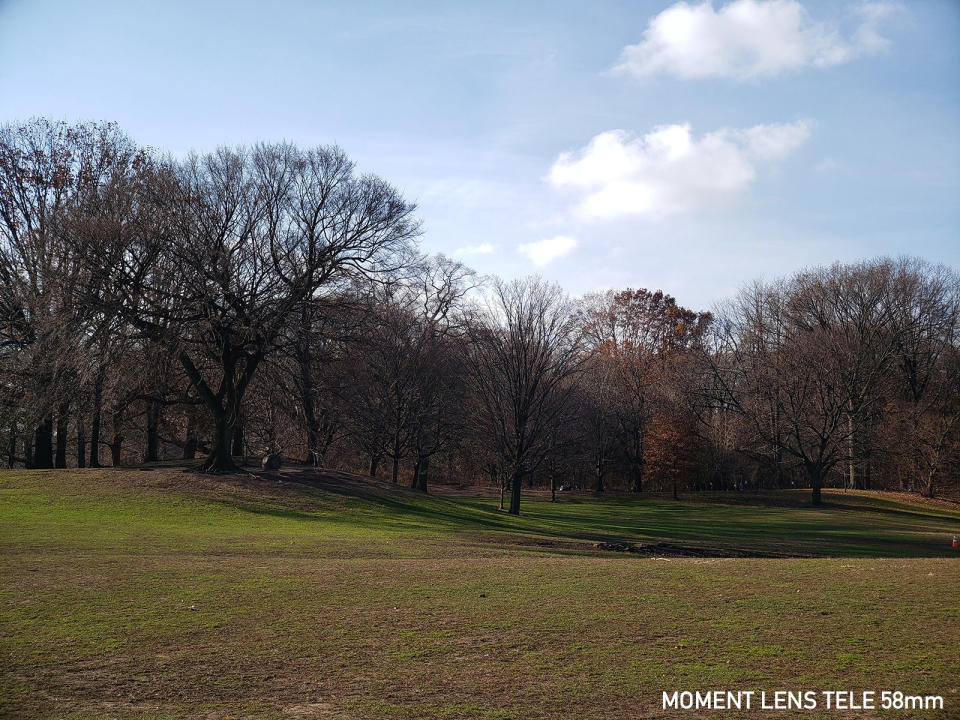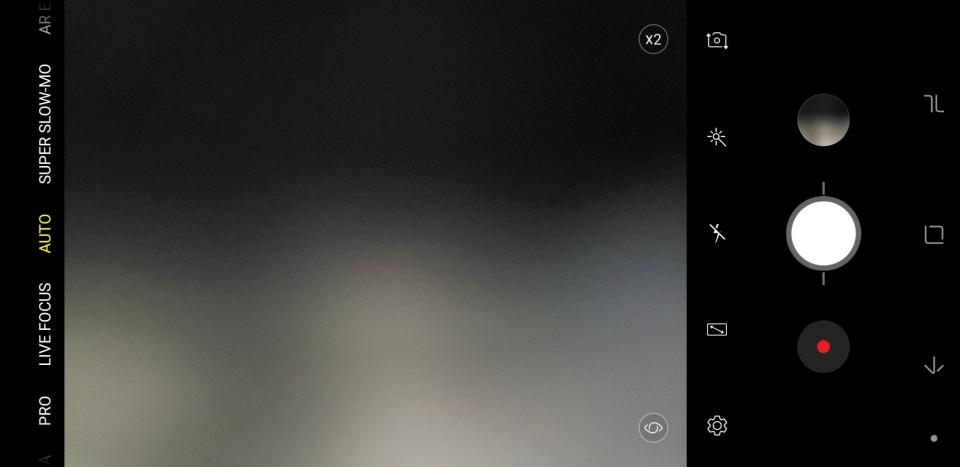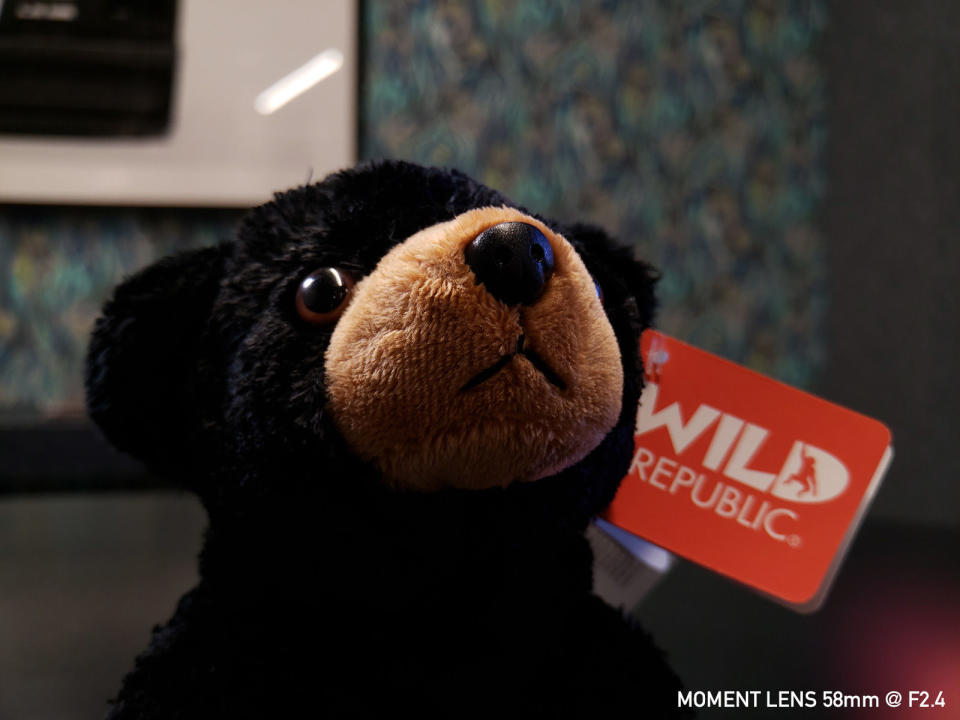Moment's 58mm lens is a portrait machine
The company's new tele lens fixes everything that was wrong with its 2014 model
When it comes to smartphone lenses, all I ever hear about are wide-angle lenses. More friends in the shot, more of the environment in the scene, yada yada yada. You're popular and you travel, I get it. But sometimes you want a picture of one thing. In that case, what you need is a telephoto lens. They're the go-to tool for portraits and landscapes.
Back in 2014, Moment released its first 60mm telephoto lens for the iPhone 5 and 5S. Things have changed since then: Smartphone image sensors are bigger and their lenses are sharper, so using Moment's older 60mm lens on a modern device doesn't yield very good results. There's a lot of distortion around the edges, and it looks pretty soft.
Enter Moment's new 58mm telephoto lens. The company's made it proportionally larger than the older 60mm lens to match the larger sensor sizes of modern smartphones, which should, in turn, result in a much sharper image across the frame. All conversion lenses have a bit of distortion, though, so we'll be on the lookout for potential pitfalls like soft edges, weird halo effects and overall image sharpness.
Portraits
Setting aside the software portrait mode many devices employ these days, Moment's 58mm telephoto lens will bring you about two times closer to the subject and, as an added bonus, will give you a bit more bokeh without any software tricks. You might be thinking, "But my phone already has a telephoto lens," but here's the rub: Those cameras have smaller sensors, which means poor low-light performance and less bokeh in the background.
In practice, attaching Moment's telephoto lens to your main camera provides much higher-quality portraits than your phone's built-in telephoto lens can. They're sharp in the middle with no noticeable chromatic aberration (or color fringing) and bring you just a bit closer for that more-candid feel.

Now, let's talk about that software portrait mode. Dual-camera devices like the iPhone XS, Galaxy Note 9 and Galaxy S9+ use the secondary camera to calculate depth, which is then used to blur the background in their respective portrait modes. Problem is, Moment's telephoto lens will block the secondary camera, meaning you can't use it. However, the Pixel 3 and iPhone XR have portrait modes that only need one camera, and those can be used with the Moment Lens telephoto.
The combination of Moment's telephoto lens and software portrait mode on the Pixel is extremely good. I couldn't test it out on the iPhone XR yet, though, since the case is only available for pre-order right now.

As you can see, the background has an ample amount of bokeh, so much so that I would probably tune it down a bit after the fact. This combination of optical telephoto and software portrait mode provides some of the most pleasing portraits I've seen from a phone.
Landscapes
For photography newcomers, it may not be obvious that landscapes are often shot with telephoto lenses. If you're capturing natural splendor, more of the scene would be better, right? Not always: Sometimes you want to zoom beyond your immediate surroundings and focus the eye on that ridge out in the distance or a waterfall across the lake. Moment's 58mm is perfect for that.
But unlike portraiture, where you probably want the background to be out of focus, landscapes need to be sharp across the entire frame. This means that any distortion or softness at the edges will be easier to notice.
As you can see above, Moment's new 58mm lens is sharp. There's surprisingly little corner softness and none of the mid-frame distortion of the older 60mm lens.
4x zoom
You can also combine Moment's 2x lens with the 2x lens on your dual-camera smartphone for an effective 4x zoom. However, there are several caveats.
On the Note 9 and Galaxy S9+, the telephoto camera only works in bright light. In any other scenario the camera will automatically switch back to the main camera and bump you up to 2x digital zoom, which doesn't look great. This also means that if you have the Moment lens attached to the zoom lens on your phone, it will obscure the main lens and in the vast majority of cases gives you something that looks like this:

I'm going to call it: Four times zoom doesn't really work on Samsung phones, though I should be clear that this is a Samsung problem and not a Moment problem.
I wasn't able to test this feature on an iPhone (I don't have one), but it should theoretically work with a third-party app like Halide, which purports to allow you to make a hard switch to the 2x camera. But again, I wasn't able to personally test this.
Quality
As I mentioned above, all conversion lenses add a bit of distortion. In the case of Moment's new 58mm telephoto lens, I could only find one scenario where this distortion becomes noticeable. When you're focusing on something close up where the depth of field is very shallow, the background bokeh looks good; no issues there. However, when you focus on something close up, areas just outside the range of focus can look a little smeary.
I'm not entirely sure that this is the fault of the Moment lens: When you switch from f1.5 to f2.4 on the Galaxy Note 9, this effect diminishes significantly, so it could be that Samsung's wide aperture is the real offender. Either way, it's something to look out for but can be worked around by putting a bit of distance between you and the subject.
But aside from the close-range-focusing issue, Moment's telephoto lens has good optical quality and is far sharper than the company's 2014 model.
What it's not good for
Even though Moment brands the 58mm lens as its "tele" offering, it's not really telephoto. Even in a 4x-zoom scenario it won't get you quite close enough for field sports or nature photography. Also, adding the lens seems to slow down autofocus speed by a beat or two, so fast-moving subjects like pets and kids may not be a great fit.
Value
The 58mm Moment Lens costs $100 plus a $30 case if you don't have one already. There aren't many alternatives on the market; there's the new Olloclip Telephoto Pro lens (also $100), but I've tested it and it doesn't compete in terms of optical quality. So if you have some adventure photography to do or you have attractive friends or partners to snap, this lens is definitely worth the price.
